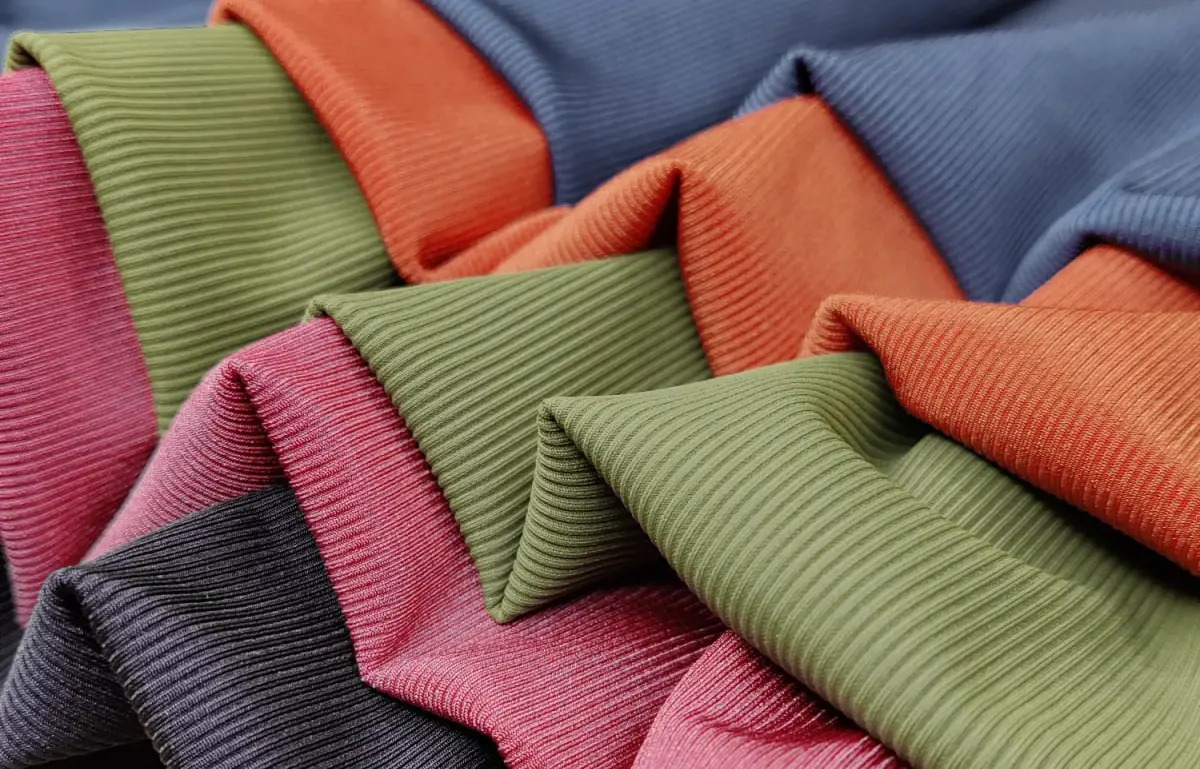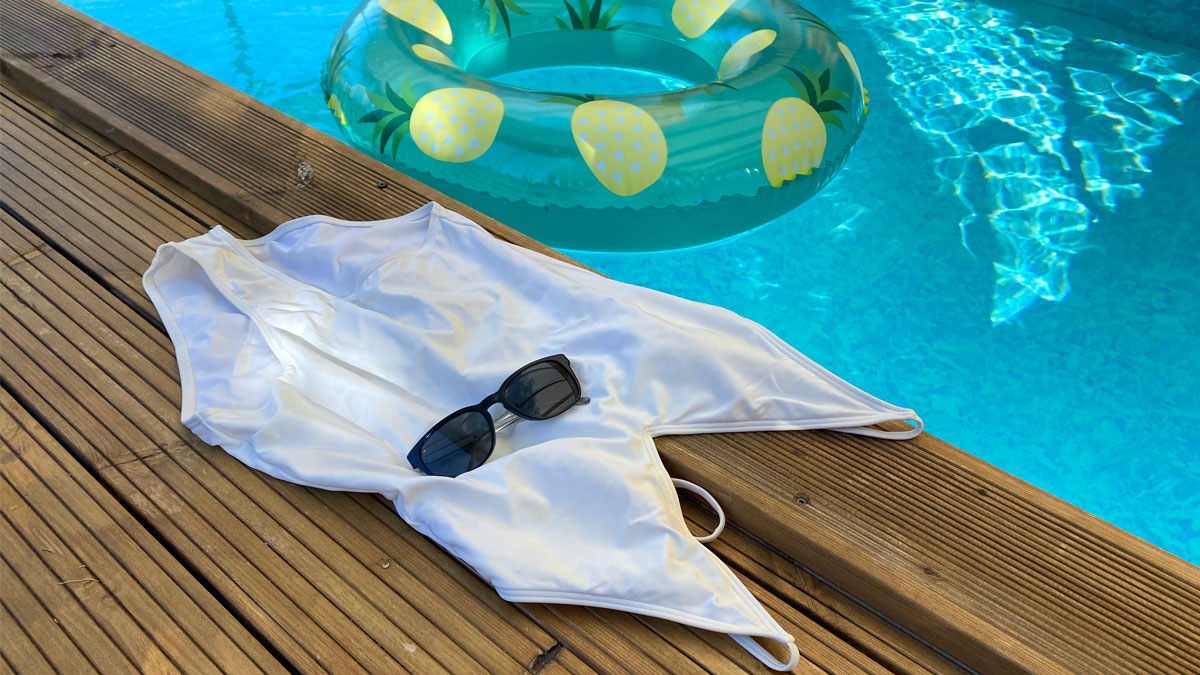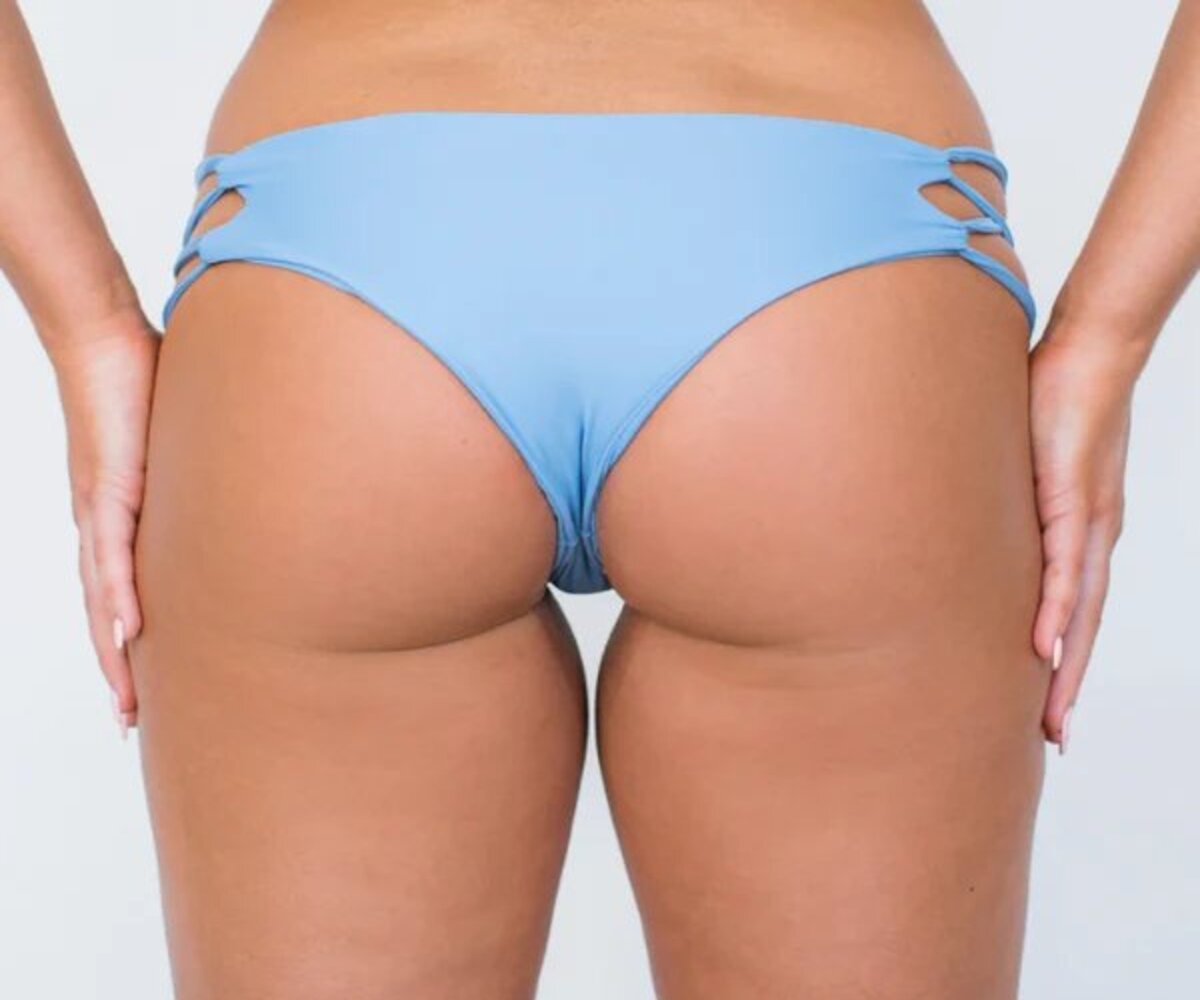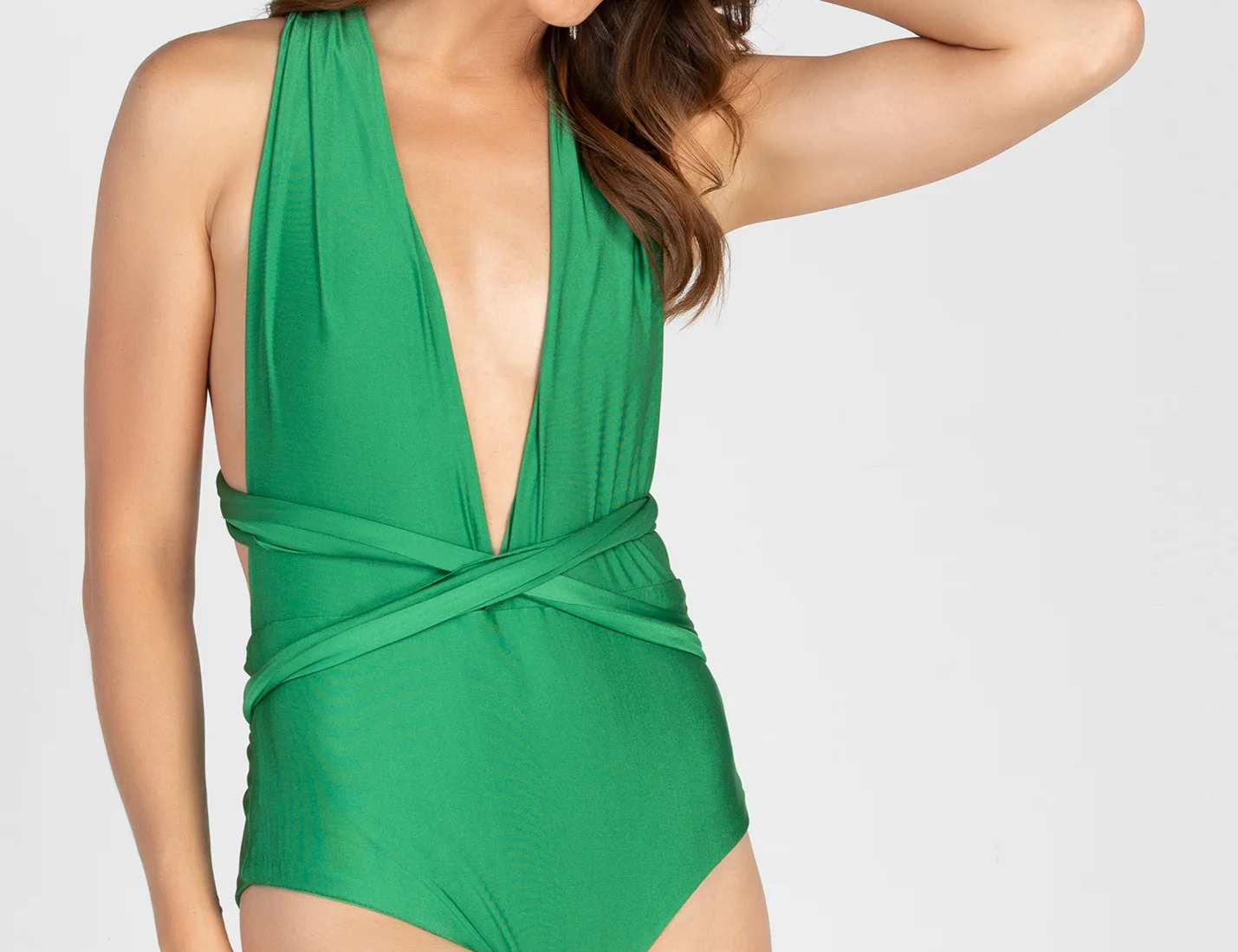Home>Latest Posts>What Fabric Is Used For Swimwear


Latest Posts
What Fabric Is Used For Swimwear
Modified: August 24, 2023
Discover the various types of underwear fabrics used for swimwear. Explore which materials are best for durability, comfort, and style in our informative guide.
(Many of the links in this article redirect to a specific reviewed product. Your purchase of these products through affiliate links helps to generate commission for Under-tec.com, at no extra cost. Learn more)
Table of Contents
- Introduction
- Common Fabrics Used for Swimwear
- Nylon
- Polyester
- Spandex
- Lycra
- Polyamide
- Factors to Consider When Choosing Swimwear Fabric
- Stretch and Elasticity
- Durability and Resistance to Fading
- Sun Protection
- Quick Drying
- Resistance to Chlorine and Saltwater
- Comfort and Fit
- Care and Maintenance of Swimwear Fabric
- Conclusion
Introduction
Swimwear is an essential garment for anyone who enjoys spending time in the water. Whether you’re lounging by the pool or hitting the beach, having the right swimwear is crucial to ensure comfort and freedom of movement. While design and style are important considerations, the fabric used in swimwear plays a vital role in its performance and durability.
Choosing the right fabric for your swimwear can greatly enhance your swimming experience. From the way it feels against your skin to its ability to withstand the rigors of water, sun, and chlorine, the fabric plays a crucial role. In this article, we will explore the common fabrics used in swimwear, factors to consider when choosing swimwear fabric, and tips for caring and maintaining your swimwear.
It’s important to note that each fabric has unique characteristics and properties. Some fabrics offer more stretch and flexibility, while others provide better resistance to fading or protection from the sun’s harmful rays. By understanding the different fabrics used in swimwear, you can make an informed decision and select the best swimwear for your needs.
So dive in and discover the world of swimwear fabrics. Learn about their advantages and disadvantages, and gain insights into which fabric will suit your preferences and activities best. Whether you’re an avid swimmer or someone who loves lounging on the beach, understanding swimwear fabrics will help you make a confident choice when it comes to selecting your next swimsuit.
Common Fabrics Used for Swimwear
When it comes to swimwear, there are several fabrics commonly used to create swimsuits that are stylish, comfortable, and functional. Each fabric has its own unique characteristics and benefits. Let’s take a closer look at some of the most commonly used fabrics:
- Nylon: Nylon is a popular choice for swimwear due to its excellent stretch and recovery properties. It is lightweight, durable, and provides a smooth and comfortable fit. Nylon is also resistant to chlorine and sun damage, making it a long-lasting option for swimwear.
- Polyester: Another widely used fabric for swimwear is polyester. It is known for its strength and excellent colorfastness, meaning it resists fading from exposure to sunlight and chlorine. Polyester swimwear is also quick-drying and retains its shape well, ensuring a comfortable and long-lasting fit.
- Spandex: Spandex, also known as elastane or Lycra, is a stretchy fabric that provides exceptional elasticity and comfort. It is often blended with other fabrics to give swimwear great flexibility and a snug fit. Spandex is highly resistant to chlorine and retains its shape even after repeated use.
- Lycra: Lycra is a brand name for spandex fabric developed by DuPont. It is known for its superior stretch and recovery capabilities, allowing swimwear to hug the body and provide optimal freedom of movement. Lycra also offers excellent resistance to chlorine and sunscreen, ensuring the longevity of your swimwear.
- Polyamide: Polyamide, also referred to as nylon, is a lightweight and durable fabric commonly used in swimwear. It is resistant to fading, stretching, and shrinking, making it an ideal choice for active swimmers. Polyamide swimwear also offers excellent breathability and quick-drying properties.
These fabrics offer different benefits, and the choice ultimately depends on your personal preferences and needs. Whether you prioritize stretch, durability, or quick-drying properties, there is a swimwear fabric that can suit your requirements.
Nylon
Nylon is one of the most commonly used fabrics for swimwear due to its excellent properties and versatility. It is a synthetic material known for its durability, strength, and abrasion resistance. Nylon swimwear is lightweight and provides a smooth and comfortable fit against the skin.
One of the key advantages of nylon is its excellent stretch and recovery properties. This allows the swimwear to conform to the body’s contours, providing a snug and supportive fit. Nylon swimwear offers freedom of movement, allowing you to swim and engage in various water activities comfortably.
Nylon is also resistant to chlorine and sun damage. This means that your swimwear will maintain its vibrant color and shape even with frequent exposure to chlorinated pools or the sun’s rays. Additionally, nylon is quick-drying, making it a convenient option for those who want their swimwear to dry rapidly between swims.
Another benefit of nylon swimwear is its longevity. It does not easily stretch out or deform, ensuring that your swimsuit retains its shape and fit for a long time. Nylon is also resistant to pilling, maintaining a smooth appearance even after multiple uses.
In terms of care, nylon swimwear is relatively low maintenance. It can be easily washed and dried without losing its shape or color. However, it is important to note that excessive exposure to harsh chemicals or high temperatures can weaken the fabric over time.
Overall, nylon is a reliable and popular choice for swimwear due to its stretch, durability, and resistance to fading. Whether you’re lounging by the pool or diving into the ocean, nylon swimwear provides comfort, style, and lasting performance.
Polyester
Polyester is another commonly used fabric for swimwear, valued for its durability and excellent colorfastness. It is a synthetic material known for its strength, resistance to stretching, and ability to retain its shape.
One of the key benefits of polyester swimwear is its exceptional resistance to fading. The fabric retains its vibrant colors even after exposure to chlorine, saltwater, and prolonged sun exposure. This makes polyester an ideal choice for swimwear that will maintain its visual appeal for seasons to come.
Additionally, polyester is quick-drying, which is advantageous for those who want their swimwear to dry rapidly between swims. This feature is particularly beneficial for active swimmers or individuals who are frequently in and out of the water.
Another advantage of polyester swimwear is its excellent durability. The fabric is known for its strength and resistance to wear and tear. It can withstand the rigors of regular use, making it a reliable choice for those who engage in water activities such as swimming, surfing, or water sports.
Furthermore, polyester swimwear retains its shape well, ensuring a comfortable and flattering fit over time. It resists stretching, sagging, and wrinkling, maintaining its original form even after multiple uses. This means that your swimwear will continue to hug your body and provide optimal support and freedom of movement.
When it comes to care, polyester swimwear is relatively low maintenance. It can be machine washed and dried without losing its shape or color. However, it is advisable to rinse swimwear in clean water after each use to remove chlorine or salt residue and prolong its lifespan.
Overall, polyester swimwear is a popular choice for its durability, resistance to fading, and ability to retain its shape. Whether you’re an occasional swimmer or a water sports enthusiast, polyester swimwear offers the performance and longevity you desire.
Spandex
Spandex, also known as elastane or Lycra, is a highly elastic fabric commonly used in swimwear. Its excellent stretchability and shape retention make it a popular choice for creating snug and form-fitting swimsuits.
One of the key advantages of spandex swimwear is its exceptional stretch and recovery properties. It can stretch up to 600% of its original size and return to its original shape without sagging or deforming. This allows the swimwear to conform to the body’s contours and provide a comfortable and supportive fit.
The stretchiness of spandex swimwear enables great freedom of movement, making it suitable for active swimmers and water sports enthusiasts. Whether you’re diving, swimming laps, or engaging in beach volleyball, spandex swimwear allows for unrestricted motion.
In addition to its stretch, spandex swimwear also offers excellent shape retention. It maintains its form even after prolonged use, ensuring that your swimsuit remains form-fitting and flattering. The fabric resists sagging, wrinkling, and bagging, allowing you to feel confident and comfortable in your swimwear.
Another advantage of spandex swimwear is its resistance to chlorine and sunscreen. It can withstand the harsh effects of chlorine, ensuring that your swimsuit remains vibrant and durable. Additionally, spandex swimwear provides protection against UV radiation, helping to shield your skin from the sun’s harmful rays.
When it comes to care, spandex swimwear requires some attention to maintain its elasticity and shape. It is best to hand wash spandex swimwear in cold water and avoid using excessive heat or harsh chemicals. Additionally, it is recommended to avoid wringing or twisting the fabric to prevent damage.
Overall, spandex swimwear is an excellent choice for those seeking a snug and comfortable fit. Its stretch, shape retention, and resistance to chlorine and UV radiation make it a reliable and versatile fabric for swimwear that can withstand the demands of water activities and provide long-lasting performance.
Lycra
Lycra is a brand name for spandex fabric developed by DuPont. It is known for its superior stretch and recovery capabilities, making it a popular choice for swimwear. Lycra swimwear offers exceptional comfort, flexibility, and support for various water activities.
One of the key advantages of Lycra swimwear is its impressive stretchability. It can stretch up to four times its original length, allowing the swimwear to conform to the body’s curves and contours. This provides a snug and supportive fit, ensuring optimal freedom of movement in and out of the water.
Moreover, Lycra swimwear offers excellent shape retention. The fabric has the ability to bounce back to its original shape, even after repeated use. This means that your swimsuit will maintain its form, avoiding sagging or drooping, and providing a flattering look each time you wear it.
Lycra is also highly resistant to chlorine and sunscreen, prolonging the lifespan of your swimwear. It can withstand the harsh effects of chlorinated pools and maintain its vibrant colors and elasticity. Additionally, Lycra swimwear provides effective protection against the sun’s harmful UV rays, keeping your skin shielded while you enjoy your time in the water.
When it comes to care, Lycra swimwear requires gentle handling. It is best to hand wash the swimwear in cold water with mild detergent to preserve its stretch and shape. Avoid using bleach or fabric softeners, as they can damage the fabric’s elasticity. After washing, it is advisable to air dry Lycra swimwear away from direct sunlight.
In summary, Lycra swimwear is an excellent choice for those seeking maximum comfort, flexibility, and support. Its superior stretch and recovery properties, along with its resistance to chlorine and UV radiation, make it a top choice for both casual swimmers and water sports enthusiasts.
Polyamide
Polyamide, also commonly known as nylon, is a lightweight and durable fabric that is frequently used in swimwear. It offers a range of benefits that make it an attractive choice for those seeking comfortable and long-lasting swimsuits.
One of the key advantages of polyamide swimwear is its exceptional strength and resistance to wear and tear. It is a durable fabric that can withstand the rigors of regular use, making it ideal for active swimmers or individuals who frequently engage in water activities.
Polyamide swimwear also offers excellent resistance to stretching and fading. The fabric is known for its ability to retain its shape and elasticity, even after extensive use. This means that your swimsuit will hug your body and provide optimal support, whether you’re swimming, lounging by the pool, or enjoying a day at the beach.
In addition to its durability, polyamide swimwear is quick-drying. It efficiently wicks away moisture, allowing the fabric to dry rapidly between swims. This is particularly beneficial for those who are constantly in and out of the water or prefer a swimsuit that dries quickly for added convenience.
Another advantage of polyamide swimwear is its resistance to chlorine and saltwater. The fabric can withstand the corrosive effects of chlorinated pools and saltwater environments, ensuring that your swimsuit maintains its integrity and color over time.
Comfort is another key aspect of polyamide swimwear. The fabric is soft and smooth against the skin, providing a comfortable fit that allows for ease of movement. This suits individuals who prioritize comfort while enjoying water activities.
When it comes to care, polyamide swimwear is relatively low maintenance. It can be machine washed with mild detergent and air dried to maintain its shape and color. However, it is advisable to rinse the swimwear in clean water after each use to remove chlorine or salt residue.
Overall, polyamide swimwear is a fantastic choice for its strength, resistance to stretching and fading, quick-drying properties, and comfort. It offers durability and style for all your water adventures.
Factors to Consider When Choosing Swimwear Fabric
When selecting swimwear, the fabric plays a crucial role in determining its comfort, durability, and performance. Here are key factors to consider when choosing swimwear fabric:
- Stretch and Elasticity: Opt for a fabric that offers sufficient stretch and elasticity, allowing the swimwear to conform to your body’s shape and provide a comfortable and supportive fit.
- Durability and Resistance to Fading: Look for a fabric that is durable and resistant to wear and tear. It should also maintain its color vibrancy even after exposure to chlorine, saltwater, and sunlight.
- Sun Protection: Consider a fabric that offers UPF (Ultraviolet Protection Factor) to protect your skin from the sun’s harmful rays when spending long hours in the water.
- Quick Drying: Choose a fabric that dries quickly between swims, allowing you to stay comfortable and prevent discomfort or skin irritation.
- Resistance to Chlorine and Saltwater: Ensure that the fabric of your swimwear can withstand the corrosive effects of chlorinated pools and saltwater, maintaining its quality and durability over time.
- Comfort and Fit: The fabric should feel soft and comfortable against your skin while providing a flattering fit that allows for freedom of movement.
It’s important to weigh these factors based on your personal preferences and intended use of the swimwear. If you’re a competitive swimmer or engage in intense water activities, durability and stretch may be of utmost importance. On the other hand, if you prioritize sun protection or lounging by the pool, fabrics with UPF and quick-drying properties may be more suitable.
Ultimately, choosing the right swimwear fabric depends on understanding your specific needs and desired level of comfort and performance. By considering these factors, you can make an informed decision and select swimwear that meets your expectations and enhances your swimming experience.
Stretch and Elasticity
When it comes to swimwear, stretch and elasticity are crucial factors to consider. The fabric’s ability to stretch and retain its shape plays a significant role in providing a comfortable and supportive fit.
A swimwear fabric with sufficient stretch allows the swimsuit to conform to your body’s contours, providing a snug and flattering fit. This elasticity is particularly important when it comes to swimwear, as it ensures freedom of movement and flexibility in the water.
Swimwear fabrics that offer good stretch and recovery properties allow the swimsuit to stretch without becoming overstretched or saggy. The fabric should be able to bounce back to its original shape, maintaining a form-fitting and flattering silhouette.
One of the most common fabrics known for its exceptional stretch and elasticity is spandex, also known as elastane or Lycra. It is often blended with other fabrics to give swimwear its stretchy and form-fitting properties.
When trying on swimwear, pay attention to how the fabric stretches and recovers. It should have a good balance between stretchiness and the ability to retain its shape. This ensures that the swimwear will stay in place and provide optimal support during activities like swimming, diving, or playing beach volleyball.
It’s worth noting that the amount of stretch can vary in swimwear fabrics. Some fabrics may have a higher percentage of spandex or elastane, offering greater elasticity and stretch. This can be advantageous for individuals who prefer a snug fit or require extra support.
Ultimately, the level of stretch and elasticity in swimwear fabric is a personal preference. Some individuals may prefer a fabric with more stretch, while others may lean towards a fabric that offers a more moderate stretch.
Regardless of your preference, it’s important to choose swimwear that allows for comfortable movement and provides the desired level of support. Take the time to try on different swimsuits and pay attention to how the fabric stretches and recovers, ensuring a comfortable and well-fitting swimwear option for your needs.
Durability and Resistance to Fading
When selecting swimwear, durability and resistance to fading are important considerations. The fabric’s ability to withstand the wear and tear of water activities and exposure to sunlight can greatly impact the longevity and appearance of your swimwear.
Swimwear fabrics that are durable and long-lasting ensure that your swimsuit can withstand the demands of regular use. Look for fabrics that are known for their strength and resistance to abrasion, such as nylon or polyester.
Nylon is a popular choice due to its exceptional durability. It is a sturdy fabric that can resist tearing and damage from rough surfaces, ensuring that your swimwear will withstand various activities like swimming, surfing, or beach volleyball.
Polyester is another fabric known for its durability. It is resistant to stretching and sagging, maintaining the shape and fit of your swimwear over time. Polyester also offers excellent colorfastness, meaning it resists fading even after exposure to chlorine and sunlight.
In addition to durability, the ability of the swimwear fabric to resist fading is crucial for maintaining the vibrant color and visual appeal of your swimsuit. Fabrics with high colorfastness, such as polyester, maintain their color even after repeated exposure to chlorine, saltwater, and UV rays.
It’s important to note that the degree of colorfastness may vary depending on the fabric and dyeing process. Some swimwear fabrics are treated with special dyes or finishes to enhance their resistance to fading.
When shopping for swimwear, take note of any claims or specifications regarding the fabric’s resistance to fading. Look for swimwear labels that indicate the use of fade-resistant dyes and provide information on how the fabric holds up to harsh pool chemicals and UV exposure.
Proper care and maintenance also play a crucial role in preserving the durability and color of your swimwear. Follow the care instructions provided by the manufacturer, such as avoiding excessive exposure to sunlight and rinsing the swimwear in clean water after each use.
By choosing swimwear that offers durability and resistance to fading, you can enjoy your swimsuit for a longer period and maintain its vibrant appearance. Be sure to consider these factors when selecting swimwear to ensure that it meets your expectations in terms of durability and visual appeal.
Sun Protection
Sun protection is a crucial consideration when choosing swimwear, especially if you spend extended periods in the water or under the sun. The fabric of your swimwear can play a significant role in providing protection from the sun’s harmful UV rays.
Sunscreens and shade can provide some level of protection, but swimwear with built-in sun protection adds an extra layer of defense. Look for swimwear fabrics that offer UPF (Ultraviolet Protection Factor) ratings, which indicate the level of protection they provide.
UPF ratings typically range from 15 to 50+, with higher ratings offering more protection. For optimal sun protection, look for swimwear with a UPF rating of 50+, which blocks out 98% of the sun’s UV radiation.
Swimwear fabrics with high UPF ratings have been specially designed and treated to offer excellent sun protection. They provide a physical barrier that blocks harmful UV rays from reaching your skin.
Keep in mind that the level of sun protection may vary depending on factors such as the fabric type, fabric thickness, and garment structure. Additionally, sun protective swimwear is not a substitute for sunscreen on exposed areas of your body.
To maximize sun protection, consider swimwear designs that offer more coverage, such as rash guards or full-body swimsuits. These styles provide added protection for your arms, shoulders, and torso.
Remember to complement your sun protective swimwear with other sun safety measures, such as wearing a wide-brimmed hat, applying sunscreen to exposed areas, and seeking shade during peak sun hours.
Regular care and maintenance are necessary to maintain the sun protection capabilities of your swimwear. Follow the care instructions provided by the manufacturer, which may include recommendations for washing and drying.
By choosing swimwear that offers sun protection, you can enjoy your time in the water with peace of mind, knowing that your skin is shielded from the harmful effects of the sun’s UV rays.
Quick Drying
Having swimwear that dries quickly is not only convenient but also important for maintaining comfort during and after water activities. The ability of the fabric to dry rapidly ensures that you can enjoy your swimsuit without feeling damp or weighed down.
Swimwear fabrics that are designed to dry quickly are typically made from materials that have high moisture-wicking properties. These fabrics have the ability to pull moisture away from the skin and disperse it across a larger surface area for faster evaporation.
Polyester is a popular choice for quick-drying swimwear. It is known for its ability to repel water and wick moisture away from the body, ensuring that the fabric dries rapidly after leaving the water.
In addition to polyester, other synthetic fabrics such as nylon and spandex are also known for their quick-drying properties. These fabrics are lightweight and breathable, allowing air to circulate through the fibers and aid in the drying process.
Quick-drying swimwear is particularly beneficial for individuals who engage in water activities or spend extended periods in the sun. It reduces the risk of discomfort and skin irritation that can occur from prolonged exposure to wet fabric.
When it comes to caring for quick-drying swimwear, proper storage and rinsing are key. After each use, rinse the swimwear with clean water to remove any chlorine, salt, or sand residue. Avoid wringing or twisting the fabric and instead gently squeeze out the excess water before laying it flat to dry.
It’s worth noting that while quick-drying swimwear is designed to dry rapidly, the drying time can vary depending on factors such as the fabric thickness, environmental conditions, and air circulation. Hanging the swimwear in a well-ventilated area or using a clothesline can help speed up the drying process.
By choosing swimwear that dries quickly, you can enjoy your time in the water and feel comfortable and dry soon after leaving the pool or beach. This allows you to focus on having fun and enjoying your water activities without the worry of damp or clingy fabric.
Resistance to Chlorine and Saltwater
Swimwear is often exposed to harsh elements such as chlorine from pools or saltwater from the ocean. Therefore, it is essential to choose swimwear that has resistance to chlorine and saltwater to ensure its longevity and performance.
Chlorine is commonly used in swimming pools to maintain water cleanliness, but it can have detrimental effects on swimwear fabrics. Fabrics that are resistant to chlorine are specially treated to withstand the corrosive effects of the chemical, allowing the swimwear to maintain its color and shape.
Swimwear fabrics such as polyester, nylon, and spandex are known for their resistance to chlorine. These fabrics can endure repeated exposure to chlorine-treated water without fading or losing their elasticity.
Similarly, saltwater can also affect swimwear fabrics. Saltwater can cause fabric to become stiff and lose its shape over time. Fabrics that are resistant to saltwater are designed to withstand the corrosive effects of salt and maintain their durability even after exposure.
When selecting swimwear, look for swimwear labels or descriptions that specifically mention resistance to chlorine and saltwater. This ensures that the fabric has been treated for added durability against these elements.
It is important to note that while swimwear fabrics may have resistance to chlorine and saltwater, they may still require proper care and maintenance to prolong their lifespan. After each use, rinse the swimwear in clean water to remove any chlorine or salt residue. Avoid leaving swimwear in a damp state for extended periods, as this can promote the growth of bacteria or mold.
Proper storage is also important to prevent damage to the swimwear. Allow the swimwear to completely dry before storing it in a cool and dry place away from direct sunlight.
By choosing swimwear that is resistant to chlorine and saltwater, you can ensure that your swimsuit will maintain its color, shape, and durability. This allows you to enjoy your time in the water without worrying about the damaging effects of chlorine or saltwater.
Comfort and Fit
Comfort and fit are key considerations when choosing swimwear. The fabric of the swimwear plays a significant role in determining how comfortable and supportive it feels against your skin.
Swimwear fabrics should be soft, smooth, and non-irritating, allowing you to move freely and comfortably in the water. Fabrics such as nylon, polyester, and spandex are known for their comfort and ability to provide a pleasant feel against the skin.
Aside from comfort, the fit of the swimwear is crucial for both aesthetic appeal and functionality. A well-fitting swimsuit should hug your body in all the right places, providing support and allowing for a full range of motion.
Swimwear fabrics with stretch and elasticity, such as spandex or Lycra, are often used to create swimsuits that offer an optimal fit. These fabrics allow the swimwear to conform to your body’s contours and provide a snug and supportive feel.
The design and construction of the swimwear, along with the fabric used, also contribute to its overall fit. Features such as adjustable straps, underwire support, or built-in bra cups can enhance the fit and provide additional comfort and support.
When trying on swimwear, take note of how it feels against your skin and how it fits across different parts of your body. Ensure that the swimwear provides adequate support and coverage while allowing for ease of movement.
It’s important to consider your body type and personal preferences when choosing the most flattering swimwear. Different styles and cuts, such as one-piece swimsuits, bikinis, or tankinis, can offer varying levels of coverage and support to suit your comfort and confidence levels.
Remember that swimwear sizes can vary across different brands and styles, so it’s essential to refer to the sizing chart provided by the manufacturer and try on different sizes to find the best fit for your body.
Overall, choosing swimwear with a comfortable and well-fitting fabric enhances your overall swimwear experience. It allows you to enjoy your time in the water with confidence, comfort, and the freedom to move effortlessly.
Care and Maintenance of Swimwear Fabric
Proper care and maintenance are essential in preserving the quality and longevity of swimwear fabrics. Taking the time to care for your swimwear will ensure that it maintains its shape, color, and performance over time.
Here are some important tips to follow for the care and maintenance of swimwear fabric:
- Rinse after each use: After swimming, rinse your swimwear in cool, clean water to remove any chlorine, saltwater, sand, or sunscreen residue. This helps prevent discoloration and damage to the fabric.
- Hand wash or use a gentle cycle: To protect the fabric’s elasticity and shape, hand wash your swimwear using a mild detergent. Alternatively, use a gentle cycle with cold water. Avoid using harsh detergents or bleach, as they can damage the fabric.
- Avoid excessive wringing or twisting: Gently squeeze out excess water from your swimwear after washing, but avoid wringing or twisting the fabric. Excessive twisting can lead to stretching or misshaping of the swimwear.
- Air dry away from direct sunlight: Lay your swimwear flat on a towel or hang it in a shaded area to air dry. Avoid drying it in direct sunlight, as this can cause the colors to fade and the fabric to become brittle.
- Avoid rough surfaces: When wearing your swimwear, be cautious of sitting or rubbing against rough surfaces such as rocks or pool edges. This can lead to snagging or tearing of the fabric.
- Avoid contact with sunscreen and other chemicals: Apply sunscreen before putting on your swimwear to minimize its contact with the fabric. Chemicals in sunscreen or other beauty products can cause discoloration or damage to the fabric.
- Alternate between swimsuits: Rotating between multiple swimsuits allows each one to have proper time to dry and recover its shape. This helps prevent excessive stretching or wear on a single swimsuit.
- Store properly: Store your swimwear in a cool and dry place, away from direct sunlight or heat. Avoid folding or stacking swimwear with embellishments or padded cups, as this can cause distortion or creasing.
By following these care tips, you can extend the lifespan of your swimwear and maintain its quality for many seasons to come. Proper care ensures that your swimwear continues to look and feel great, allowing you to enjoy your time in the water with confidence.
Conclusion
Choosing the right fabric for swimwear is essential to ensure comfort, durability, and performance. The fabric used in swimwear plays a vital role in how it feels against your skin, its ability to withstand the elements, and its overall longevity. From the stretch and elasticity to the resistance to fading and sun protection, each fabric has unique characteristics that can enhance your swimming experience.
Nylon, polyester, spandex, Lycra, and polyamide are some of the common fabrics used in swimwear. These fabrics offer various advantages such as stretch, durability, quick drying, and resistance to chlorine and saltwater. Understanding the qualities of each fabric allows you to make an informed decision when selecting your swimwear.
Factors to consider when choosing swimwear fabric include stretch and elasticity, durability and resistance to fading, sun protection, quick drying, resistance to chlorine and saltwater, and comfort and fit. By considering these factors and finding the right balance between functionality and style, you can select swimwear that suits your needs and preferences.
Proper care and maintenance also play a crucial role in preserving the quality and lifespan of your swimwear. Rinsing after use, hand washing or using a gentle cycle, air drying, and avoiding excessive wringing or contact with harsh chemicals are all important steps to ensure the longevity of your swimwear.
In conclusion, understanding the different fabrics used in swimwear and considering factors such as stretch, durability, sun protection, quick drying, and resistance to chlorine and saltwater will help you make an educated choice when selecting your swimwear. By taking proper care of your swimwear, you can extend its lifespan and continue to enjoy its comfort, style, and performance in and out of the water season after season.










